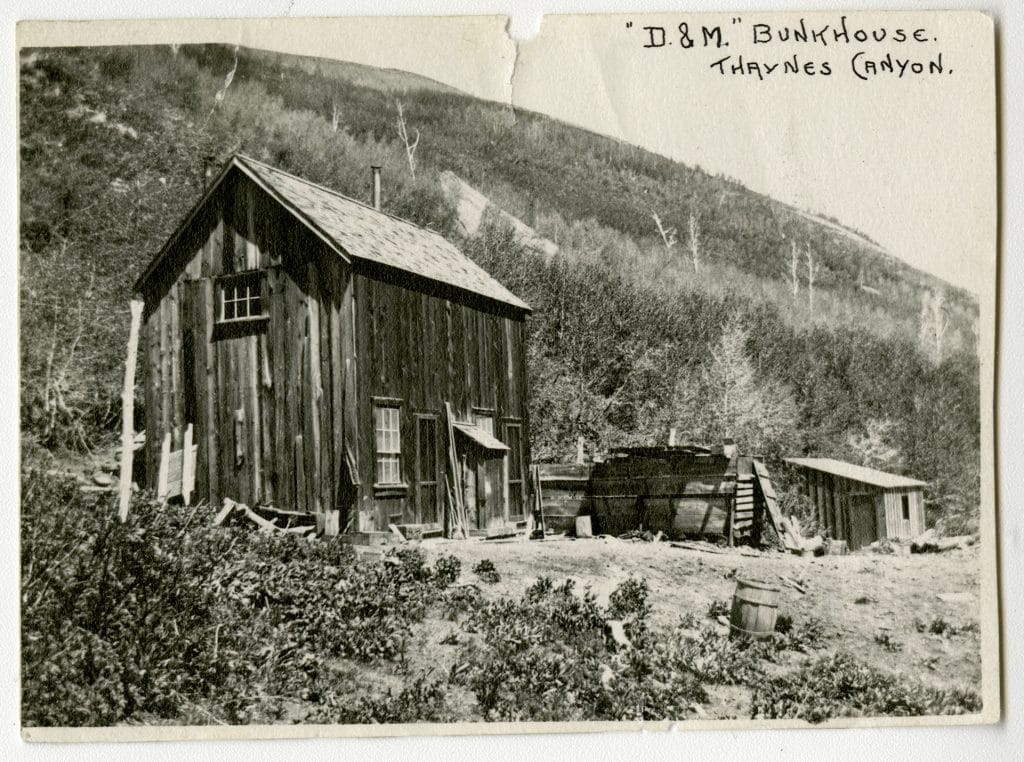The image featured in this article surfaced while researching in the Park City Museum archives on a completely different topic. It was titled “D. & M. Bunkhouse, Thaynes Canyon” and hand-written on the back was “Duffy & Marrow Mine.” Was there really a Duffy & Marrow mine and boarding house in the Park City mining district? No one seemed to know. So, this interesting old image stimulated yet another research project.
In the 1880s, the Park Record reported that James Duffy was working claims in Thaynes Canyon. By 1891, upper and lower tunnels had been driven to provide both air circulation and to remove water from the mine. The quality of the ore produced was described as “second class.” Production was intermittent. There is no further record until a patent claim was published in the Park Record in 1899 of James Duffy and James Mara for the D&M lode mining claim. In 1901, the shaft was in 90 feet and the lower tunnel had been extended in 400 feet to drain water and remove ore without the need for a hoisting works. Work began on grading out ground for a boarding house and blacksmith shop.
The Park Record reported in 1903 that the lower tunnel was driven in 500 feet with another 80 feet to go to reach the shaft. The promoters of the property were confident that they would “add another bonanza to the camp” once the tunnel was completed. It was also reported that no structures had been erected to protect the workmen from the weather.
Developers of mining properties always needed more capital and by 1906 there were rumors that the D&M was for sale to an investment group from Cincinnati. A deal was never struck and in 1910 the D&M was sold to Solon Spiro of the King Con. According to the Park Record, a force of men was put to work in developing the property and with capital behind it “there is little doubt that a mine will be uncovered.”
This optimistic forecast never materialized. In a 1912 report produced by the United States Geological Survey, author John Boutwell described the property’s tunnels and geology in some detail. The concluding sentence of his report is revealing – “Some ore is said to have been shipped from the property.”
So, the D&M was yet another of the many Park City mining stories of optimism and determination. But what about the boarding house? Well, using the various descriptions of the location of the mine and a little “bushwacking,” the ruins of the boarding house were located in the fall of 2018. Apparently, at some point after 1903, the boarding house had been constructed. The roof and walls are now collapsed due to many years of heavy snow loads, but the footprint of the building can still clearly be seen. A visit to the D&M mine will be included in the Park City Museum’s hike to the Thaynes Conveyor on August 8, so you can see for yourself a mine lost and found.

Credit: Park City Historical Society & Museum, Fraser Buck Collection